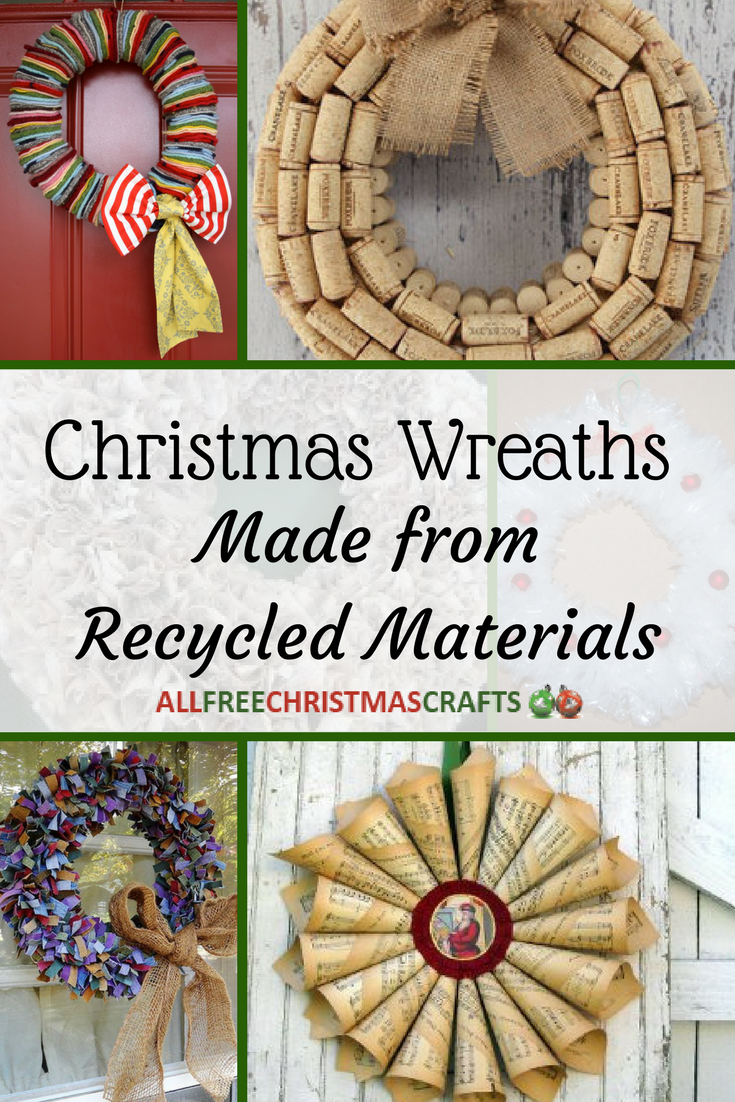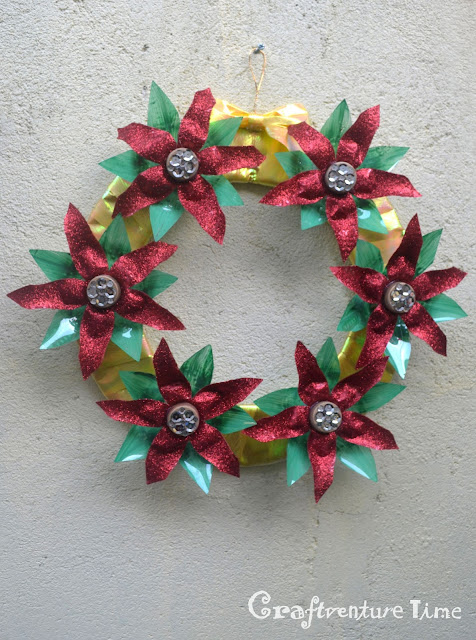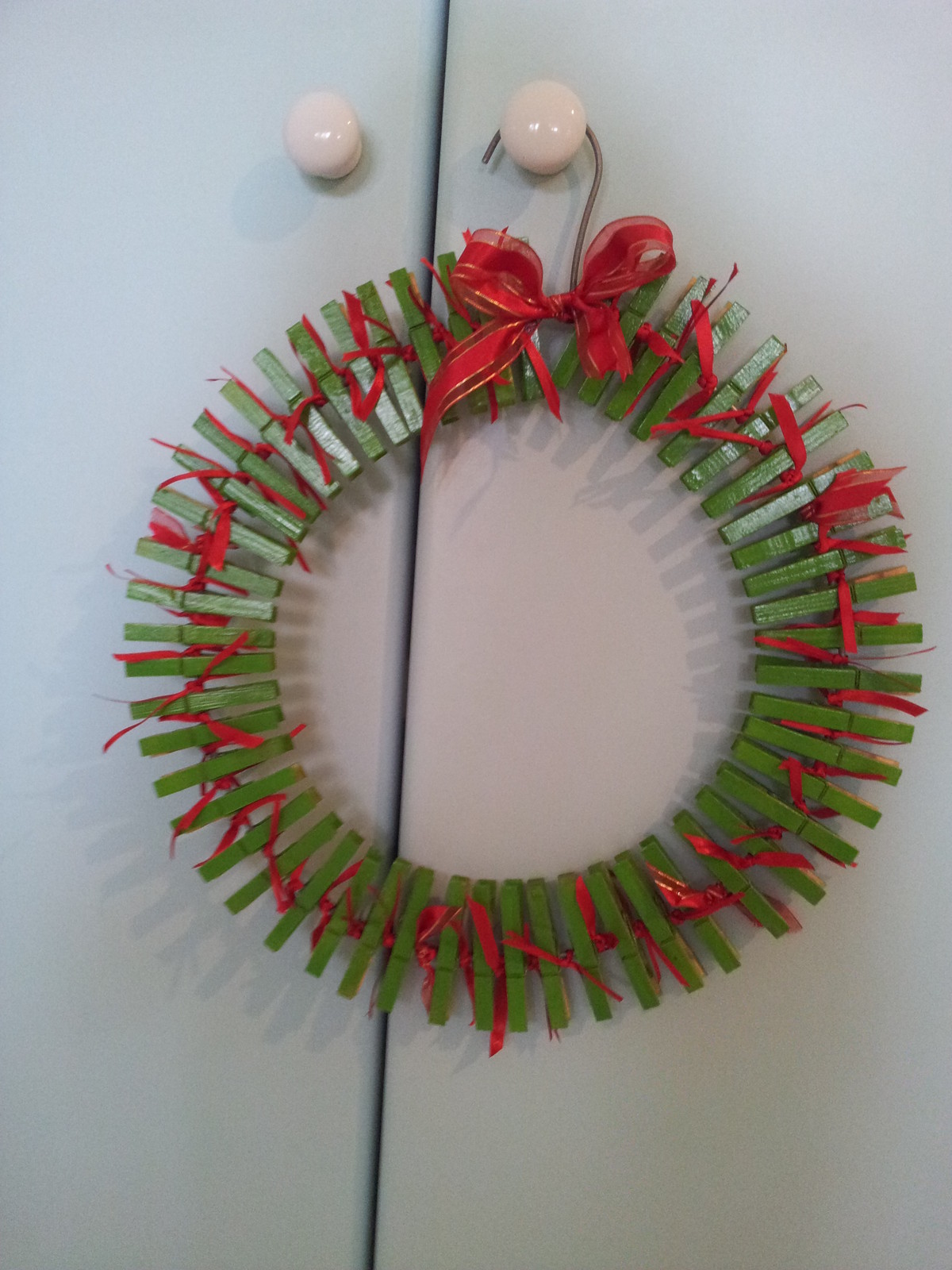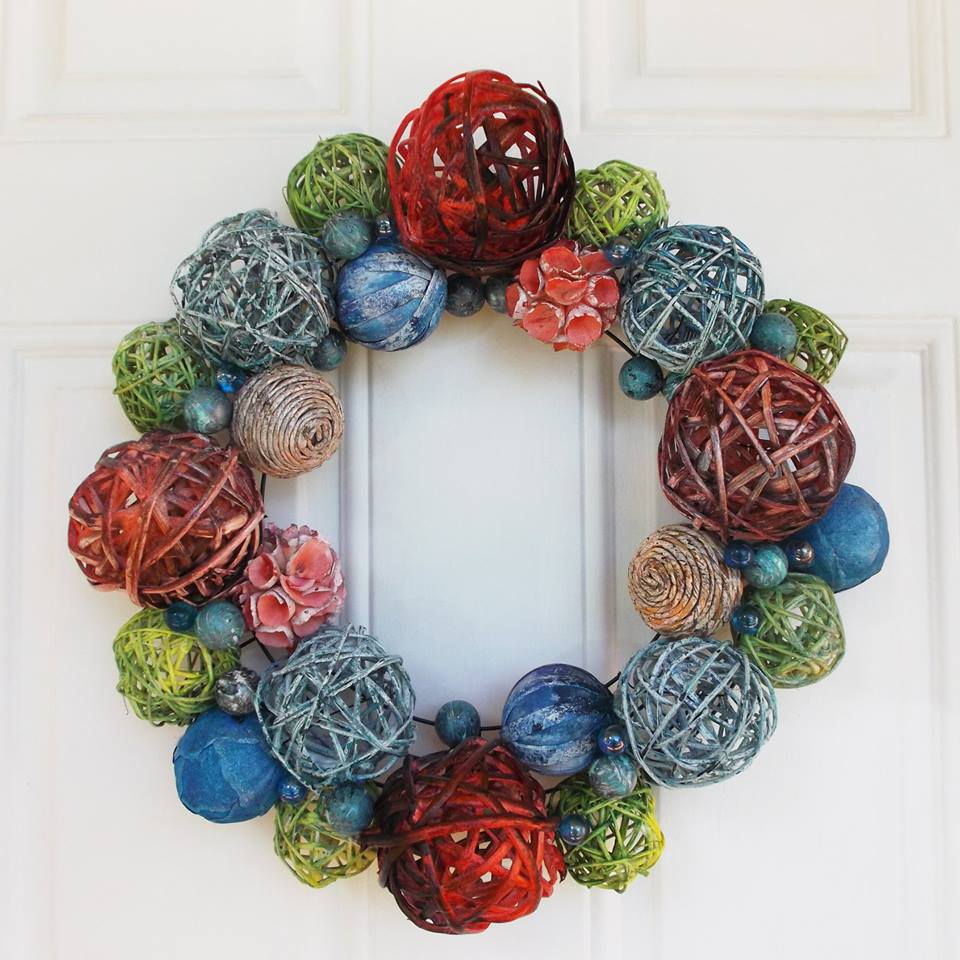A Festive Embrace Of Sustainability: Crafting Christmas Wreaths From Recycled Materials
A Festive Embrace of Sustainability: Crafting Christmas Wreaths from Recycled Materials
Related Articles: A Festive Embrace of Sustainability: Crafting Christmas Wreaths from Recycled Materials
Introduction
In this auspicious occasion, we are delighted to delve into the intriguing topic related to A Festive Embrace of Sustainability: Crafting Christmas Wreaths from Recycled Materials. Let’s weave interesting information and offer fresh perspectives to the readers.
Table of Content
A Festive Embrace of Sustainability: Crafting Christmas Wreaths from Recycled Materials

The Christmas season is synonymous with traditions, warmth, and the joy of giving. It is also a time when many households engage in festive decorating, adorning their homes with twinkling lights, colorful ornaments, and, of course, the quintessential Christmas wreath. While the traditional wreath, often crafted from fresh evergreen boughs, evokes a sense of rustic charm, it also carries an environmental footprint. Fortunately, a growing trend towards sustainable practices has inspired a shift towards crafting Christmas wreaths from recycled materials. This approach not only minimizes environmental impact but also offers a unique and personal touch to holiday décor.
This article delves into the world of recycled Christmas wreaths, exploring the diverse materials used, the creative techniques employed, and the benefits of embracing this sustainable approach. We will examine the various ways in which recycled materials can be transformed into festive masterpieces, showcasing the ingenuity and artistry inherent in crafting with repurposed items.
A Symphony of Recycled Materials:
The beauty of recycled Christmas wreaths lies in their adaptability. A wide range of materials can be incorporated, each offering a unique texture, color, and character. Here are some commonly used recycled materials:
- Cardboard: This readily available material can be transformed into a sturdy base for the wreath. Cardboard can be cut into rings, painted, and adorned with various embellishments, creating a blank canvas for creative expression.
- Newspaper: An unexpected yet versatile material, newspaper can be rolled into tubes, twisted into shapes, or used to create a textured base for the wreath. The natural brown tones of newspaper offer a rustic aesthetic, while its malleability allows for intricate designs.
- Wine corks: These corky wonders can be strung together, glued to a base, or arranged in a mosaic pattern to create a unique and festive wreath. The natural texture and warm color of wine corks add a touch of elegance and whimsy to the final product.
- Plastic bottles: Upcycled plastic bottles, especially those with interesting shapes and colors, can be cut, molded, and arranged to form the base of a wreath. This approach not only reduces plastic waste but also provides a sustainable and durable alternative to traditional materials.
- Fabric scraps: Leftover fabric scraps, ribbons, and old clothes can be used to create colorful bows, embellishments, and even the base of the wreath. This approach allows for personalized designs and adds a touch of warmth and texture to the final piece.
- Twigs and branches: Nature provides a bounty of readily available materials for wreath making. Dried twigs, branches, and even fallen leaves can be used to create a rustic and organic wreath. These natural elements can be interwoven, glued together, or arranged in a free-flowing design.
- Old Christmas decorations: This approach allows for repurposing and reimagining cherished ornaments, lights, and other decorative elements. These items can be attached to a recycled base, creating a nostalgic and personalized wreath.
Techniques for Transforming Waste into Wonder:
The process of crafting a recycled Christmas wreath involves a blend of creativity, resourcefulness, and a touch of DIY magic. Here are some common techniques employed:
- Weaving and interlacing: This technique involves weaving together various materials, such as cardboard strips, newspaper tubes, or twigs, to create a sturdy and intricate base for the wreath.
- Gluing and layering: This technique involves attaching various materials, such as wine corks, fabric scraps, or plastic bottle pieces, to a base using glue or hot glue.
- Sewing and stitching: This technique can be used to attach fabric scraps, ribbons, or other soft materials to create a decorative and personalized wreath.
- Decoupage: This technique involves applying decoupage glue and paper to a base, creating a unique and layered effect. Paper from old magazines, maps, or even wrapping paper can be used for this purpose.
- Painting and decorating: Once the base of the wreath is assembled, it can be painted, adorned with embellishments, and customized to reflect personal style and preferences.
The Benefits of Embracing Sustainability:
The shift towards crafting Christmas wreaths from recycled materials is not merely a trend but a conscious choice driven by environmental awareness and a desire to minimize waste. Here are some of the key benefits:
- Reducing Waste: By repurposing materials that would otherwise end up in landfills, we contribute to a more sustainable approach to holiday decorating.
- Conserving Resources: Utilizing recycled materials reduces the need to harvest new resources, thereby conserving natural resources and minimizing environmental impact.
- Promoting Creativity: The process of crafting a recycled wreath encourages creativity, resourcefulness, and a sense of accomplishment.
- Creating a Unique Statement: Recycled wreaths offer a unique and personal touch to holiday décor, reflecting individual style and a commitment to sustainability.
- Inspiring Others: By showcasing recycled wreaths, we can inspire others to embrace sustainable practices and reduce their environmental footprint.
Frequently Asked Questions:
Q: What are the best materials to use for a recycled Christmas wreath?
A: The best materials for a recycled Christmas wreath depend on your desired aesthetic and the materials available. Some popular choices include cardboard, newspaper, wine corks, plastic bottles, fabric scraps, twigs, and branches.
Q: How do I attach materials to a recycled wreath base?
A: Materials can be attached to a recycled wreath base using various methods, including weaving, interlacing, gluing, sewing, and stitching. The choice of method depends on the material used and the desired effect.
Q: What are some creative ideas for decorating a recycled Christmas wreath?
A: Creativity knows no bounds when it comes to decorating a recycled Christmas wreath. You can use paint, fabric scraps, ribbons, beads, buttons, old Christmas ornaments, pinecones, dried fruit, and even natural elements like moss and twigs to add a festive touch.
Q: Where can I find inspiration for recycled Christmas wreath designs?
A: Inspiration can be found in numerous sources, including online tutorials, craft blogs, magazines, and social media platforms. You can also draw inspiration from nature, traditional Christmas decorations, and your own personal style.
Tips for Crafting a Sustainable Christmas Wreath:
- Plan and gather materials: Before embarking on your wreath-making journey, take some time to plan your design and gather the necessary materials. This will ensure a smooth and enjoyable crafting experience.
- Clean and prepare materials: Before using any recycled materials, make sure to clean them thoroughly to remove dirt, dust, and any potential contaminants.
- Experiment with different techniques: Don’t be afraid to experiment with different techniques to discover what works best for you and your materials.
- Embrace imperfection: Recycled wreaths often have a unique and imperfect charm that adds to their character and beauty.
- Share your creations: Share your creations with friends and family, inspiring others to embrace sustainable practices.
Conclusion:
Crafting a Christmas wreath from recycled materials is not just a festive activity; it is a testament to our commitment to a greener and more sustainable future. By repurposing materials that would otherwise end up in landfills, we can create beautiful and meaningful decorations while reducing our environmental footprint. The joy of crafting a recycled wreath lies not only in the final product but also in the process of transforming waste into wonder, fostering a sense of creativity, resourcefulness, and environmental responsibility. As we embrace this sustainable approach, we can create a festive tradition that celebrates both the joy of the season and our commitment to a healthier planet.








Closure
Thus, we hope this article has provided valuable insights into A Festive Embrace of Sustainability: Crafting Christmas Wreaths from Recycled Materials. We appreciate your attention to our article. See you in our next article!
Leave a Reply